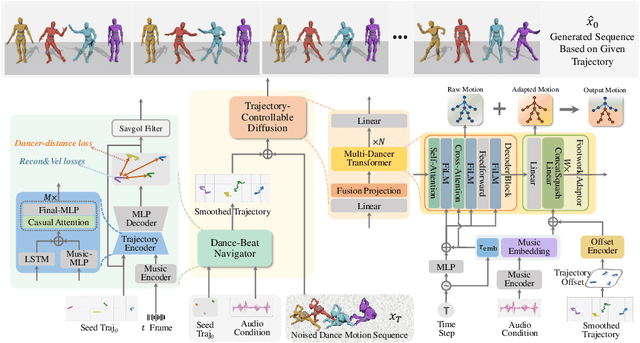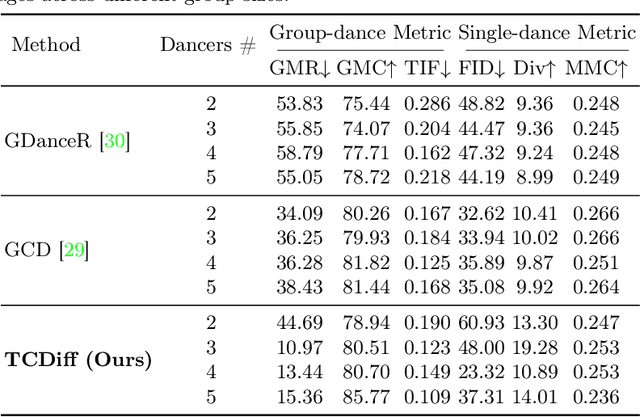Yuqin Dai
MindAligner: Explicit Brain Functional Alignment for Cross-Subject Visual Decoding from Limited fMRI Data
Feb 07, 2025



Abstract:Brain decoding aims to reconstruct visual perception of human subject from fMRI signals, which is crucial for understanding brain's perception mechanisms. Existing methods are confined to the single-subject paradigm due to substantial brain variability, which leads to weak generalization across individuals and incurs high training costs, exacerbated by limited availability of fMRI data. To address these challenges, we propose MindAligner, an explicit functional alignment framework for cross-subject brain decoding from limited fMRI data. The proposed MindAligner enjoys several merits. First, we learn a Brain Transfer Matrix (BTM) that projects the brain signals of an arbitrary new subject to one of the known subjects, enabling seamless use of pre-trained decoding models. Second, to facilitate reliable BTM learning, a Brain Functional Alignment module is proposed to perform soft cross-subject brain alignment under different visual stimuli with a multi-level brain alignment loss, uncovering fine-grained functional correspondences with high interpretability. Experiments indicate that MindAligner not only outperforms existing methods in visual decoding under data-limited conditions, but also provides valuable neuroscience insights in cross-subject functional analysis. The code will be made publicly available.
Harmonious Group Choreography with Trajectory-Controllable Diffusion
Mar 10, 2024



Abstract:Creating group choreography from music has gained attention in cultural entertainment and virtual reality, aiming to coordinate visually cohesive and diverse group movements. Despite increasing interest, recent works face challenges in achieving aesthetically appealing choreography, primarily for two key issues: multi-dancer collision and single-dancer foot slide. To address these issues, we propose a Trajectory-Controllable Diffusion (TCDiff), a novel approach that harnesses non-overlapping trajectories to facilitate coherent dance movements. Specifically, to tackle dancer collisions, we introduce a Dance-Beat Navigator capable of generating trajectories for multiple dancers based on the music, complemented by a Distance-Consistency loss to maintain appropriate spacing among trajectories within a reasonable threshold. To mitigate foot sliding, we present a Footwork Adaptor that utilizes trajectory displacement from adjacent frames to enable flexible footwork, coupled with a Relative Forward-Kinematic loss to adjust the positioning of individual dancers' root nodes and joints. Extensive experiments demonstrate that our method achieves state-of-the-art results.
Text2Avatar: Text to 3D Human Avatar Generation with Codebook-Driven Body Controllable Attribute
Jan 01, 2024



Abstract:Generating 3D human models directly from text helps reduce the cost and time of character modeling. However, achieving multi-attribute controllable and realistic 3D human avatar generation is still challenging due to feature coupling and the scarcity of realistic 3D human avatar datasets. To address these issues, we propose Text2Avatar, which can generate realistic-style 3D avatars based on the coupled text prompts. Text2Avatar leverages a discrete codebook as an intermediate feature to establish a connection between text and avatars, enabling the disentanglement of features. Furthermore, to alleviate the scarcity of realistic style 3D human avatar data, we utilize a pre-trained unconditional 3D human avatar generation model to obtain a large amount of 3D avatar pseudo data, which allows Text2Avatar to achieve realistic style generation. Experimental results demonstrate that our method can generate realistic 3D avatars from coupled textual data, which is challenging for other existing methods in this field.
Exploring Multi-Modal Control in Music-Driven Dance Generation
Jan 01, 2024Abstract:Existing music-driven 3D dance generation methods mainly concentrate on high-quality dance generation, but lack sufficient control during the generation process. To address these issues, we propose a unified framework capable of generating high-quality dance movements and supporting multi-modal control, including genre control, semantic control, and spatial control. First, we decouple the dance generation network from the dance control network, thereby avoiding the degradation in dance quality when adding additional control information. Second, we design specific control strategies for different control information and integrate them into a unified framework. Experimental results show that the proposed dance generation framework outperforms state-of-the-art methods in terms of motion quality and controllability.
 Add to Chrome
Add to Chrome Add to Firefox
Add to Firefox Add to Edge
Add to Edge